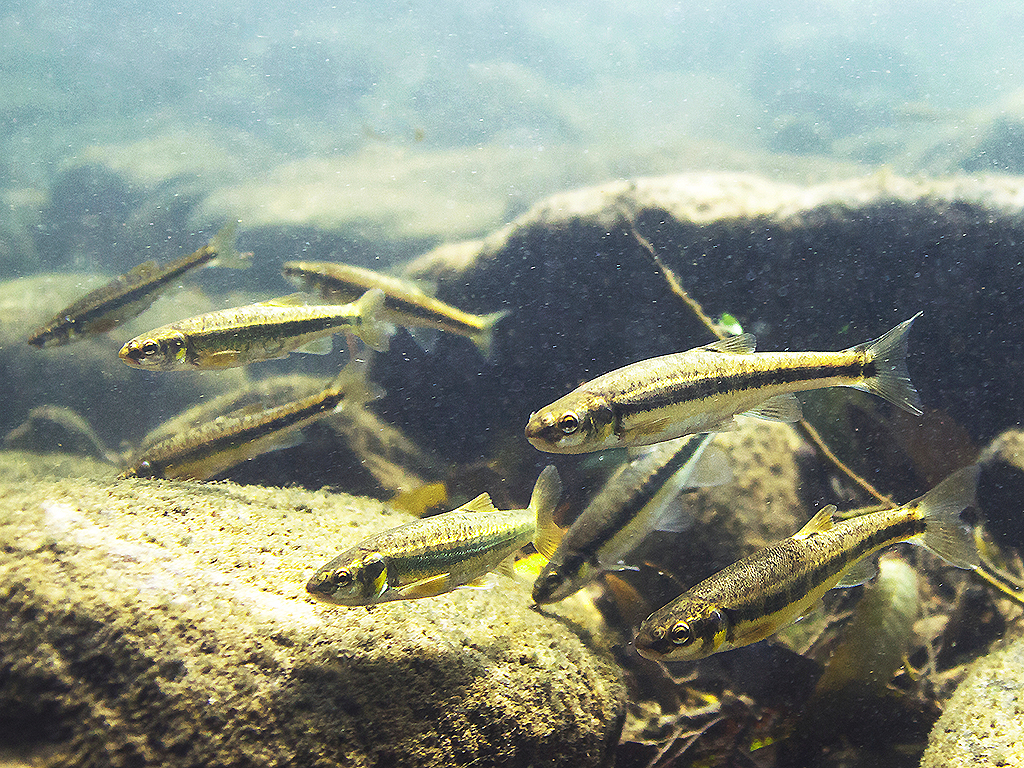Early warning: Small fish may indicate water shortages and contaminants

Shiners in the streams could serve as canaries in a coal mine for tracking water availability and planning for future droughts, according to a Texas A&M AgriLife Research scientist.
Joshuah Perkin, fish ecologist in the College of Agriculture and Life Sciences at Texas A&M University, has been focusing on how small fish species react to disruptions to water flow in creeks, streams and rivers.
Perkin said these fishes’ sensitivity to change and their populations’ success or failure in streams are good indicators of how groundwater depletion or drought are impacting freshwater ecosystems. The rise and fall of these fish populations are also a good prognosticator for how these changes could impact humans.
Small fish like shiners and minnows could represent an important early warning signal for policy makers as long-term weather projections predict increased variability, he said. This could include extended periods of drought due to climate change, Perkin said. But the small fish are also an important link between aquatic and terrestrial ecosystems.
“Small shiners tell us so much about water quality and quantity,” he said. “Much like canaries’ sensitivity to low oxygen levels warned miners, these small fish species raise red flags regarding water shortages and contaminants. Their sensitivity can give us an idea about what to expect when it comes to water rarity and quality as environments are altered or conditions change.”
Perkin said aquatic ecosystems are linked to all life on Earth. Aquatic ecosystems include freshwater and marine ecosystems in streams, rivers, reservoirs, wetlands and oceans.
The fish and aquatic life in these areas provide countless services, including food and recreation, to people around the globe. They also hold cultural significance.
Aquatic lifeforms also provide food for animals on land, in the water and in the air. Aquatic ecosystems regulate nutrients and resources like carbon dioxide and link all these services through a network of watersheds across continents and around the globe.
Small fish like shiners play a large role in all these services, but Perkin’s work is focused on the informational services these fish provide. They are a key signaler of habitat health and habitat response to change.
Natural changes like drought or artificial changes like dams, reservoirs, water use and land fragmentation can impact stream water levels, which subsequently impact populations of small shiners. Perkin has studied several small fish species and the impact water availability and quality has on their populations, from the Great Plains to the Appalachian Mountains.
One of Perkin’s projects funded by the Texas Parks and Wildlife Department looked at how one of these sensitive species – the plains minnow, which once dominated the Southern Great Plains, has reacted to changes in groundwater connections. Habitat fragmentation, dams and reservoirs have created a seasonal ebb and flow for the minnows’ populations.
“Reservoirs and dams are important for storing water for hydroelectricity and other needs, but they also matter in the ways we can preserve these fish,” he said. “When water is rare over a season or over a matter of years, the fish populations decline accordingly. When water returns the populations grow.”
For example, populations of the plains minnow and other species such as the peppered chub and the prairie chub in the upper Red River declined significantly during drought conditions in 2011-2013, Perkin said. Their numbers bounced back when rains returned, but the dry period was a good indicator of how the species react to water scarcity.

